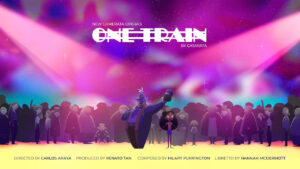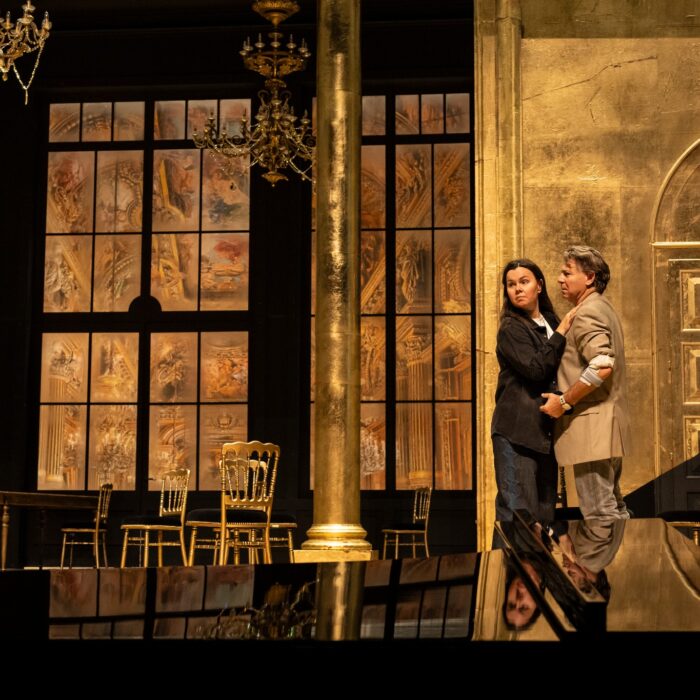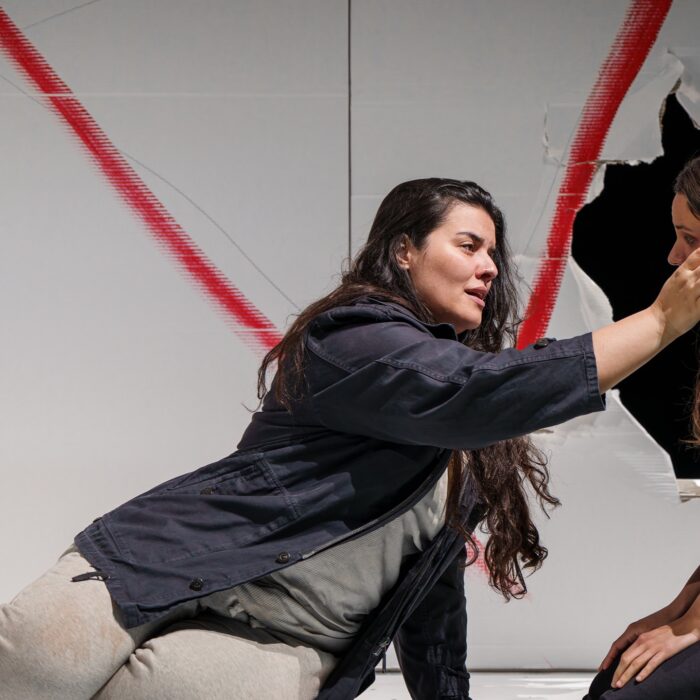
Opera Meets Film: New Camarata Opera’s Animated Opera ‘One Train’ and Its Magic
By John Vandevert
An exciting new project by New Camerata Opera, the animated short-film opera entitled “One Train,” bears the markers of a great path towards making opera more inviting. A joint effort by librettist Hannah McDermott and Hilary Purrington, the story weaves a path of awareness, magic and selflessness. It is bound to surprise even the most well-seasoned opera goer. This may be a helpful way to introduce opera to children in a healthy, productive, and easy way. The film is both nurturing and innovative in its storytelling and visual language.
I recommend anyone to check it out and share with your little ones!
The Story of ‘One Train’
The libretto, written by Hannah McDermott, centers around the life of a young girl named Miriam and her mother, on their way to school. The events leave both changed for good and reveal universal truths.
Beginning on the New York subway, a young girl named Miriam, played by Kristin Renee Young, is hurried into the car bound for departure by her mother, played by Julia Tang, for the first day of the new school year. It becomes quickly apparent that their journey is no ordinary venture as, in bright colors and histrionic display, a homeless magician, played by Stan Lacy, is seen making his way through the car asking, “Any food to spare?” Without reservation, Miriam offers her bagged fries to him who, in the blink of an eye, turns them into a bouquet of lush flowers with a flourish of purple smoke. Amazed by the scene, Miriam tries to get her mom’s attention but it becomes clear she will be on her own.
The magician reveals his identity and beseeches her to see “all the magic” that surrounds her, which is to say the magic of “meeting old friends and new” and learning about the dreams of those we meet. The opera unfolds from here and an introduction to the characters unfolds, each with their own dreams and stories: Marcus, played by Erik Bagger, a struggling actor on his way to a huge audition which will change his life, Kevin, played by Kyle Oliver, a second-generation immigrant to the United States on a quest to restore his parents’ button store, and Rea, played by Maria Brea, a nurse at a local hospital whose stayed up quite late and is ready to sleep. She becomes one of the more important figures in the story as she calls for a more altruistic, selfless world, aching for a vacation to restore herself.
Having gone on this journey with the magician, Miriam comes to understand what magic really is in the world that surrounds her. It seems that not everyone can see the magician nor is interested in helping each other experience the magic Miriam had discovered on this short but fruitful commute. The magician gives her a flower, a lasting impression of his message, and as she steps off and proceeds with her day, her mother asks about it. “A dream coming true” says Miriam, and through the look in the mother’s eye, her dream of a flower shop may be the next dream to be fulfilled, a life lead in pursuit of one’s ambitions with eyes on the wide world around us.
A New Take on Children’s Opera
Children’s operas have somewhat fallen away from public performance, but they haven’t disappeared just yet. Notable operas written for children like Brundibár and Puss in Boots define the historic end of the genre while more recent operas like The Little Prince and Children of Ginko have brought the genre into the contemporary present. New Camarata’s Opera has reframed children’s opera in light of new technology like animation.
For composer Hilary Purrington, the opera is about teaching children the wonders of the world around them. As she notes, “This opera teaches the main character to look beyond the familiar and become acquainted with the lives of people very different from her.” Such sentiments are echoed by Carlos Araya, director of Cartarata Studios, “With One Train, we seek to instill a sense of unity and empathy, reminding us all that we are not alone in our struggles.” With the animated element, the story becomes a tangible, entertaining medium to show the multi-dimensionality of what is often left undiscovered. Children’s opera rarely shies away from challenging subject matter. Rather than hide the rougher parts of life, it’s about how to show the world so they can make their own choices.
The short film was, as it’s been shared, rather arduous to put together and demanded an exceptional ability for pacing and negotiation between music, story, and animation. As Purrington noted, “It was challenging to compose a concise work…that is musically cohesive and creates unique musical worlds for each of the characters.” Given the film’s short length, only 14 minutes in total, making sure the music and story was fully concluded and developed remained a central struggle throughout the project. At the heart of the project, however, is the attempt to make opera a much more accessible culture to engage with, for both children and adults.
From a personal level, my experience with opera at an early age was on the main stage but this isn’t always the case for many kids who live without direct access to opera theatre, the musical arts, or music in general. Thus, this new animated film is a wonderful method by which children can be exposed to opera which nourishes their hearts and minds at the same time. As New Camarata aptly observed, “Outside of major cities like New York, Chicago, and San Francisco, it can be very challenging to attend operas at all, let alone at an affordable price.”
Kids today are fortunate to have such fun, made a global affair with projects like Petite Opera House.


